Quilt Batting – the often overlooked, very important, hidden section of a quilt. (Don’t forget to look for this week’s Blog Readers only coupon on quilting supplies!) As both a sewing enthusiast and instructor, I am frequently bombarded with questions about quilt batting. ” Should I use cotton or polyester?” ,”What is loft?”, “Is there a specific batting I should use for kids quilts”……… So this week I will take you on a tour of quilt batting – how, why, what type, tips, etc.
Types of Quilt Batting
Quilt Batting is the heart of your quilt. It is the foundation on which your quilt stitches will be laid. Batting is the center of the Quilt sandwich. It is the layer which provides dimension to the stitching. Batting adds depth and texture to the surface of the quilt top. It yields the poofy, puffy look along the “quilt” stitching lines. Quilt batting is available in many different types. Knowing what type of batting to use will depend on the finished look you wish to achieve. Also, it is important to note that most of the batting types are available bonded, fusible, with scrim, needle punched, etc. These are explained in the Terminology section.
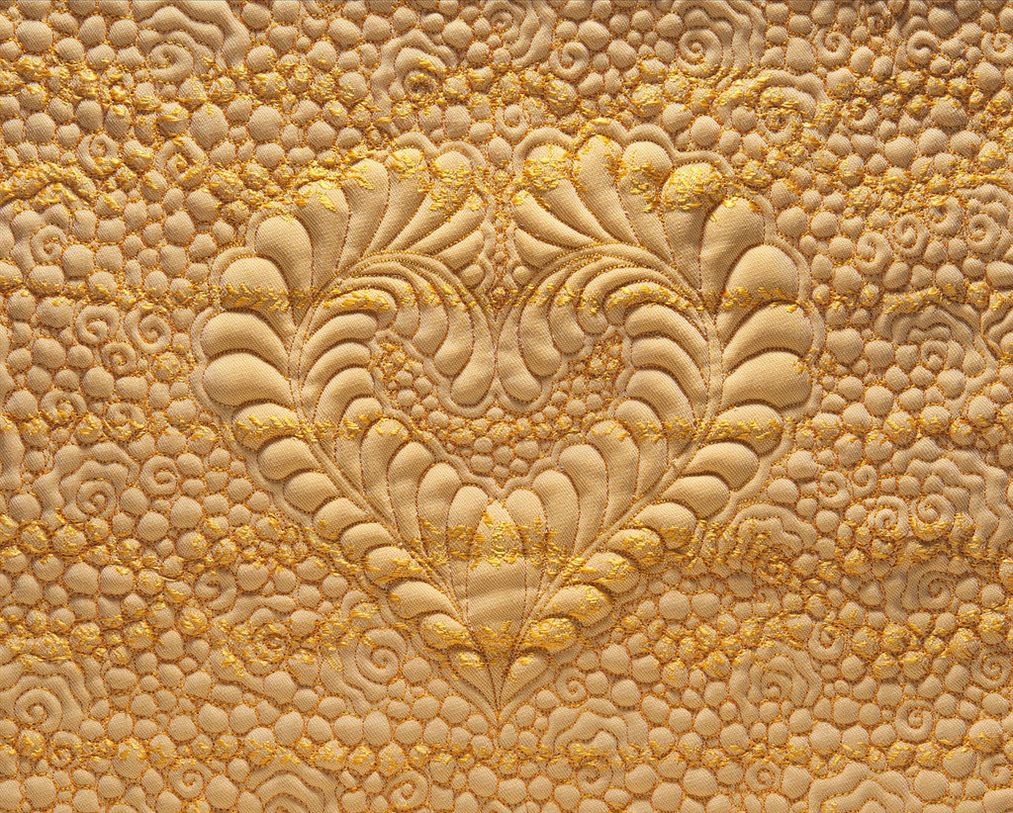
Cotton
Cotton batting is usually low loft but may also be found in medium or high loft. Made from natural fiber. Very soft, with lots of drape. It will shrink and wrinkle. Appears to age well. Cotton batting is also very breathable. Thus, it’s a good choice for heirloom quilts. Some cotton battings wash well, while others may clump or mat. Quilts made with cotton batting tend to have a “used” look to them from day one. It is not recommended to prewash most cotton battings. However, some cotton batting with scrim may be prewashed on the gentle cycle and machine dried on low. Most cotton batting is needle-punched. Needle-punching prevents separation and shedding of the fibers.
Polyester
Polyester quilt batting is typically higher in loft than cotton. It is a manmade fiber, sometimes from recycled materials. It’s much lighter in weight than cotton. Polyester fiber retains shape better than cotton or wool fibers. Thus, polyester batting takes repeated machine washings better than cotton or wool battings. Also, polyester holds up well under heavy use. The higher loft adds more dimension to the finished quilt. Quilting patterns will “pop” more with polyester batting. Polyester batting is a very good choice for a fusible. Available with scrim, needle-punched, bonded or as a fusible.
Wool
Wool is a low loft batting. It is made from natural fibers. Wool is a good choice for added warmth. It’s the flattest of the battings, therefore an excellent choice for wall hangings or other art items that won’t need to be washed. While wool tends to be strong, it does not wash well. It will shrink and dyed wool will bleed or run. Also, wool tends to clump when washed. Another issue with wool is that it becomes “felted” over time. Available needle-punched.
[coupon couponid=”11037″ coupon_align=”cctor_alignnone” name=”25% Off Quilting Supplies and Notions”]
Silk
Silk is another batting that is typically low loft. It’s a natrual fiber and very breathable. Silk batting has good drape and light weight. It is a good choice for quilted clothing or art quilts since it is washable. However, it will shrink if not prewashed. Excellent choice for embroidery projects or summer quilts. It may be difficult to locate 100% silk batting because the manufacturing process is easier when silk is slightly blended with polyester or other fibers. Available needle-punched, with scrim, bonded, and as a fusible.
Did you find this week’s coupon?
Bamboo
Bamboo is the newest natural fiber batting. Most often blended with Cotton in 50/50 mix. You won’t see 100% bamboo batting very often. It’s very breathable. It has only 2% to 3% shrinkage. It’s a great choice for machine quilting. Another plus: There’s hardly any waste product during the process to produce bamboo batting. It’s a great choice for a “greener” planet. Available needle-punched, bonded, fusible, or with scrim.
Blended Fibers
Blends are typically cotton and polyester, but may also be cotton and silk, wool and silk, or cotton and bamboo. It’s important to read the label. Know what you are purchasing. Blends are optimal for long arm quilting. Long arm quilters prefer them because they provide great dimension while affording ease in handling. Blends are best for “showing off” the quilt stiches. Blends prewash better than single fiber battings. This means you can limit shrinkage and wrinkling while still achieving more dimension. Available needle-punched, bonded, fusible, or with scrim.
Specialty Quilt Batting
These are battings that are manufactured for specific finished products. Most are insulated with a thin, silver foil like material between 2 layers of polyester or blended fiber batting. They are used to make quilted window coverings, casserole carriers, table runners, insulted lunch bags, etc. Also great for ironing board covers, toaster covers, curling iron covers, and other small appliance covers. Excellent for cloth trivets. The insulating foil-like material protects surfaces from heat.
Another type of specialty batting is one made for the construction of handbags, purses, cosmetic bags, etc. This batting adds structure plus the “poofy” dimesion of quilting to your bags. When you’re project demands a 3D finished product, the structured batting is a great choice. Some companies refer to this as a stabilizer, some a batting. Just know that the product does exist and is available as both fusible and non-fusible.
We currently feature Alex Anderson’s Quilters Select Products including battings, stabilizer, fusibles, and more.

Batting Terminology
Bearding
This is separation of batting fibers which then work their way to the surface between fabric weave. Obviously, you want to avoid this. So always purchase quality batting from a trusted source.
Bonded
This is when batting has been treated with resins, glues, or heat to fuse the fibers together. Heat bonding is also refered to as “thermal” bonding. Bonding is used to prevent bearding, clumping, and matting.
Drape
Refers to the pliability of the finished project. If the finished project is soft, flexible, and forms to your body, then it has a lot of drape. We usually want a quilt to have good drape. However, most would prefer a wall hanging to be stiffer, with less drape.
Fusible
This is batting, stabilizer, or interfacing that has been coated on the back with either a dried glue or resin that will change to an adhesive when heated with an iron. Never place the iron directly on the fusible coated side. The fusible material will stick to your iron and may actually cause permanent damage to the sole plate of the iron. Fusible batting and interfacing are good choices when pinning may be an issue.
[coupon couponid=”11037″ coupon_align=”cctor_alignnone” name=”25% Off Quilting Supplies and Notions”]
Loft
The thickness of batting is called “loft”. It also can refer to the breathability or “airiness” of the fiber structure. A “low loft” batting is thin and flat, while a “high loft” batting is thicker, fluffy, and poofy. A good rule of thumb when deciding between low or high loft: Low loft shows off your pieced pattern whereas high loft shows off your quilting stitches.
Needle-punched
A process where a machine uses thousands of tiny needles to fuse, or felt, the batting fibers together. Needle-punching causes the batting to be stronger and denser with lower loft. It can also cause the batting to be stiffer. Needle-punched batting is not good for hand quilting. It is harder to pass a hand needle through since it is more dense.
Scrim
A treatment where a thin layer of woven fibers is applied to either one or both sides of the batting. It is similar to stabilizer. It keeps the batting fibers from shifting, separating, and clumping while quilitng. Scrim is usually polyester, nylon, or other manmade material. Scrim adds strength to the batting. It also prevents stretching. Some scrim treatments make quilting by hand more difficult.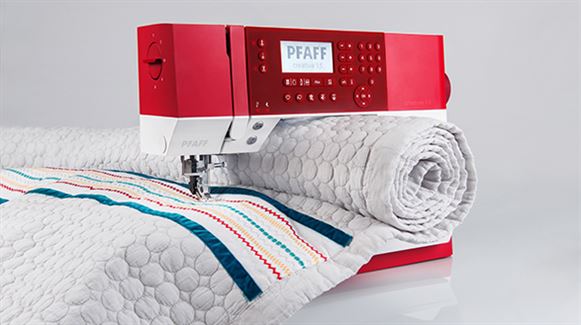
Important Quilt Batting Tips
Pay attention to the label on the batting.
- Every batting is given a rating. Look for the rating. The larger the number, the less quilting required.
- The rating tells you how close or how far apart your quilting stitch lines should be to keep the batting intact for the life of the item.
- NEVER buy batting without a label. The label contains important information about batting such as fiber type, stitching distance, and any treatment made to the batting. Laundering information is also found on the label.
Make sure your batting is larger than your quilt top. Quilting, or stitching, the batting to the quilt top “shrinks” the batting. The stitching tends to “pull” the batting in.
Polyester does NOT mean flame retardant. If you require or would like a flame retardant batting, make sure it is clearly labeled “FLAME RETARDANT”. Polyester bating is a petroleum based product and is highly flammable unless treated with a flame retardant chemical.
Cotton or Cotton Blend batting is a good choice for children’s quilts because it is softer and launders well.
Quilt Batting is sold in packaged pre-sized pieces, or on bolts or rolls to be cut to a custom length. The packaged pre-sized batting is sized for normal bed sizes: Crib, Twin, Full, Queen or King.
You can use fusible batting tape to piece together smaller leftover batting to make bigger pieces for new projects. These fused pieces are really good for placemats, table runners, wall hangings, etc.
Polar fleece and flannel also make good quilt battings. Polar fleece has stretch so you may need to stabilize it with a spray starch or try our homemade stabilizer. The recipe is found at the END (bottom of page) of our article on stabilizer.
Test Your Quilt Batting
Always make a test block and test quilt batting you selected for your quilting project.
Make a 12 inch or larger block using the same fabrics as your quilting project. This is your test block. (It is good for testing your quilting stitches in addition to your batting!) Cut a piece batting slightly larger than your test block and quilt as you will your final project. Note: Make sure to finish the edges as your project requires. If you plan to hang your finished project, then hang this sample.
Use the sample exactly as you will the completed project. If your project will be used by a child, then give the sample to a child to handle for a few days. Next, clean your sample as you will your project, even if you plan on dry cleaning your finished project. Check for signs of bearding and feel for clumping. How does the quilting stitching look? Does the drape meet your expectations? The test block is the time to make any corrections without ruining your project.
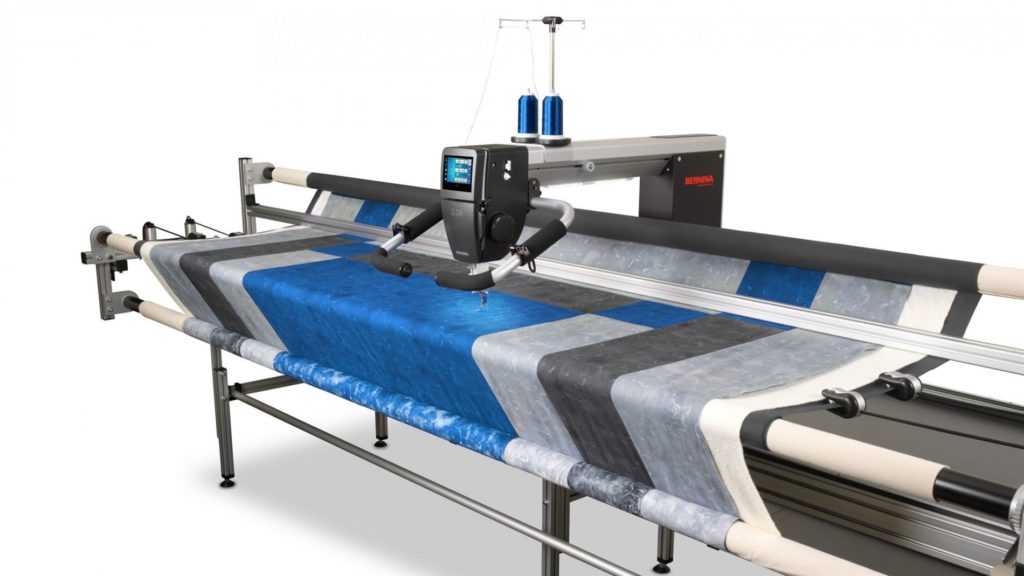
Quilt Batting and Quilting Trivia Facts
- Quilting has been done for centuries, thus batting has been around a LONG time. Some of the earliest known quilts have been traced to the Crusades!
- Some Scholars have dated quilting to the ancient Egyptians!
- Originally, quilting was used to create padded armor, not blankets!
- The expected lifespan of cotton batting or cotton fabric is about 100 years.
- The world’s largest patchwork quilt was completed in Portugal, in June of 2000, and is 200m x 170m – that’s approximately 656 by 558 FEET!!!.
- Another little known fact: Quilts were not commonly made from pieced Blocks until the late 1830’s!
- Quilting is more popular today than it was 100 years ago!
- Types of batting haven’t changed much since the 1960’s.
- We have a renowned quilt museum right in our back yard. The Rocky Mountain Quilt Museum is located in Golden, Colorado.
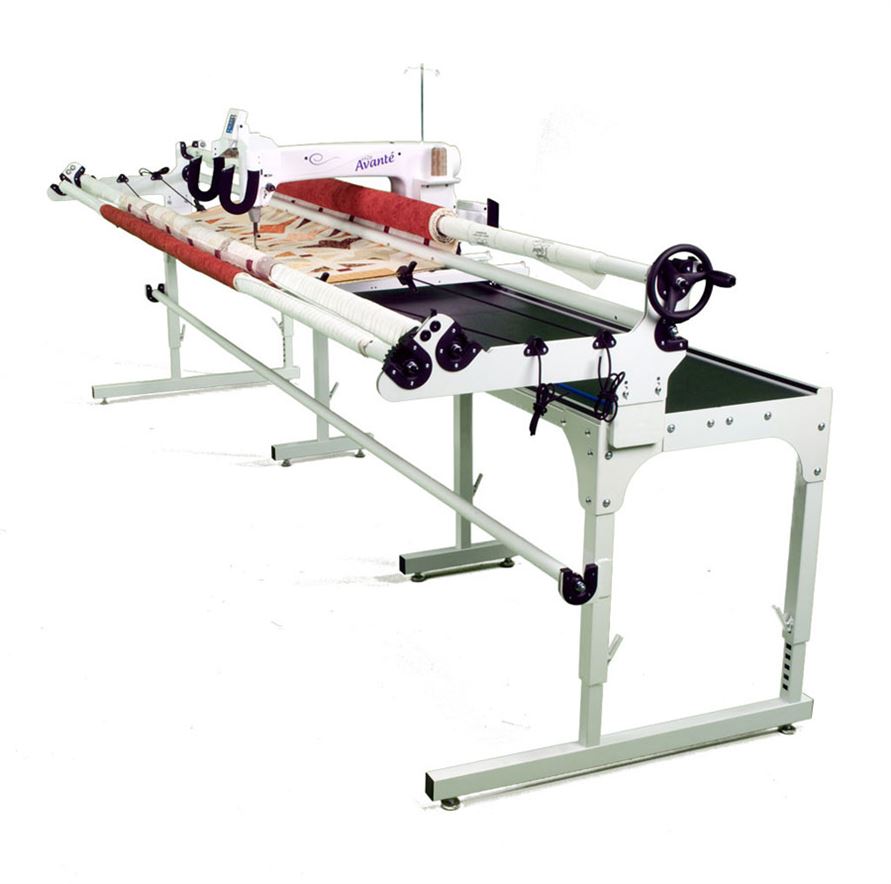
Quilting At Rocky Mountain Sewing and Vacuum
Rocky Mountain Sewing has a selection of quilting supplies such as rulers, patterns, templates, needles, thread, frames, batting, etc. We are currently featuring Alex Anderson Quilters Select Stabilizers and battings. We carry several brands of Long Arm Quilters and Machine Quilting Frames. And we sell several types of sewing machines made for quilting.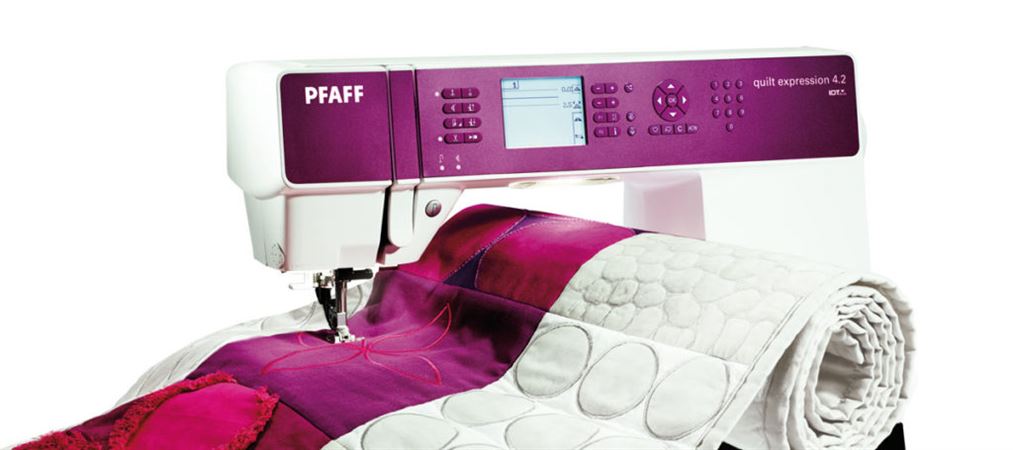
We also offer classes in quilting – “Learn to Quilt” classes in addition to specific project and technique quilting classes. Check out our class calendar and see our selection of quilting classes at a Rocky Mountain Sewing location near you. We have 3 sewing stores in the Denver Metro area plus 1 in Colorado Springs.
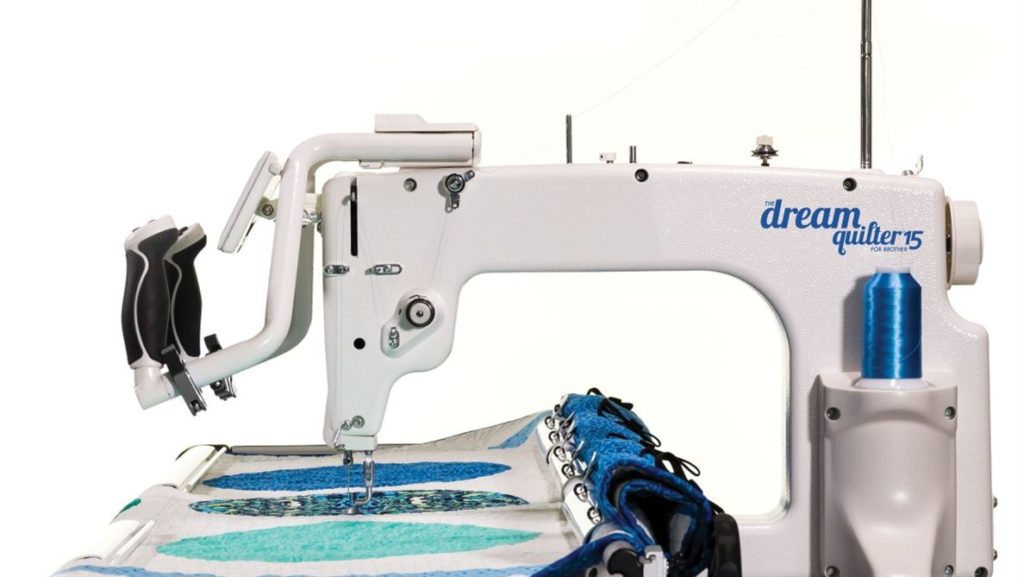
PLEASE comment on our website, our blog, our stores, our classes, etc. at the bottom of this blog page. We want to hear back from you. Let us know how we are doing. We love recommendations, suggestions, feedback, and hearing from our customers. If you want a specific class offered – PLEASE ASK! We will do our best to offer it.
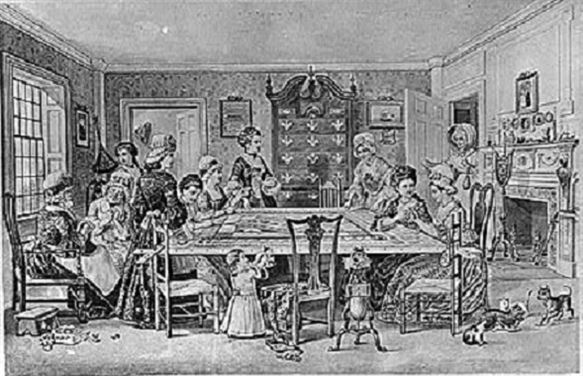
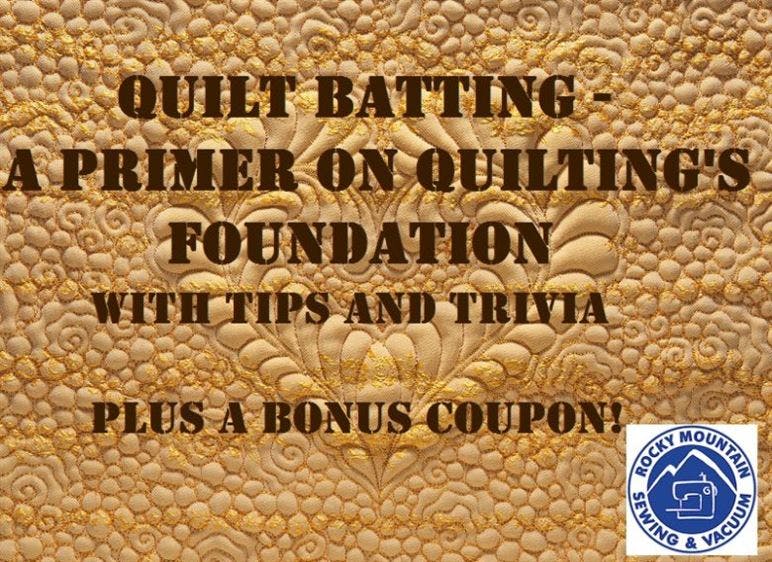
Comments
cmorelli
Hi Rosellen! Thanks for your comment. I am glad that the article was useful for you. Be sure to look at my other articles on needles, stabilizers, thread, and sergers. I think you find these helpful as well. Don’t hesitate to ask questions or ask for advice. And please let us know if there is something you would like to see featured in future articles or if you like us to offer a specific class that is not currently on our calendar. Check in each week to see new articles and tips.
cmorelli
Collette, I am happy to hear that you enjoyed the article on batting. Please feel free to contact us with any questions about sewing/quilting/crafting. You should read my other articles on stabilizer, thread, needles, and sergers! Check back each week for a new article!
Let us know if you would like us to offer a class on anything we don’t already have on our rotser.
Rosellen Baluha
Thank you so very much for this information on batting. I found it extremely useful.
collette youse
good info on batting